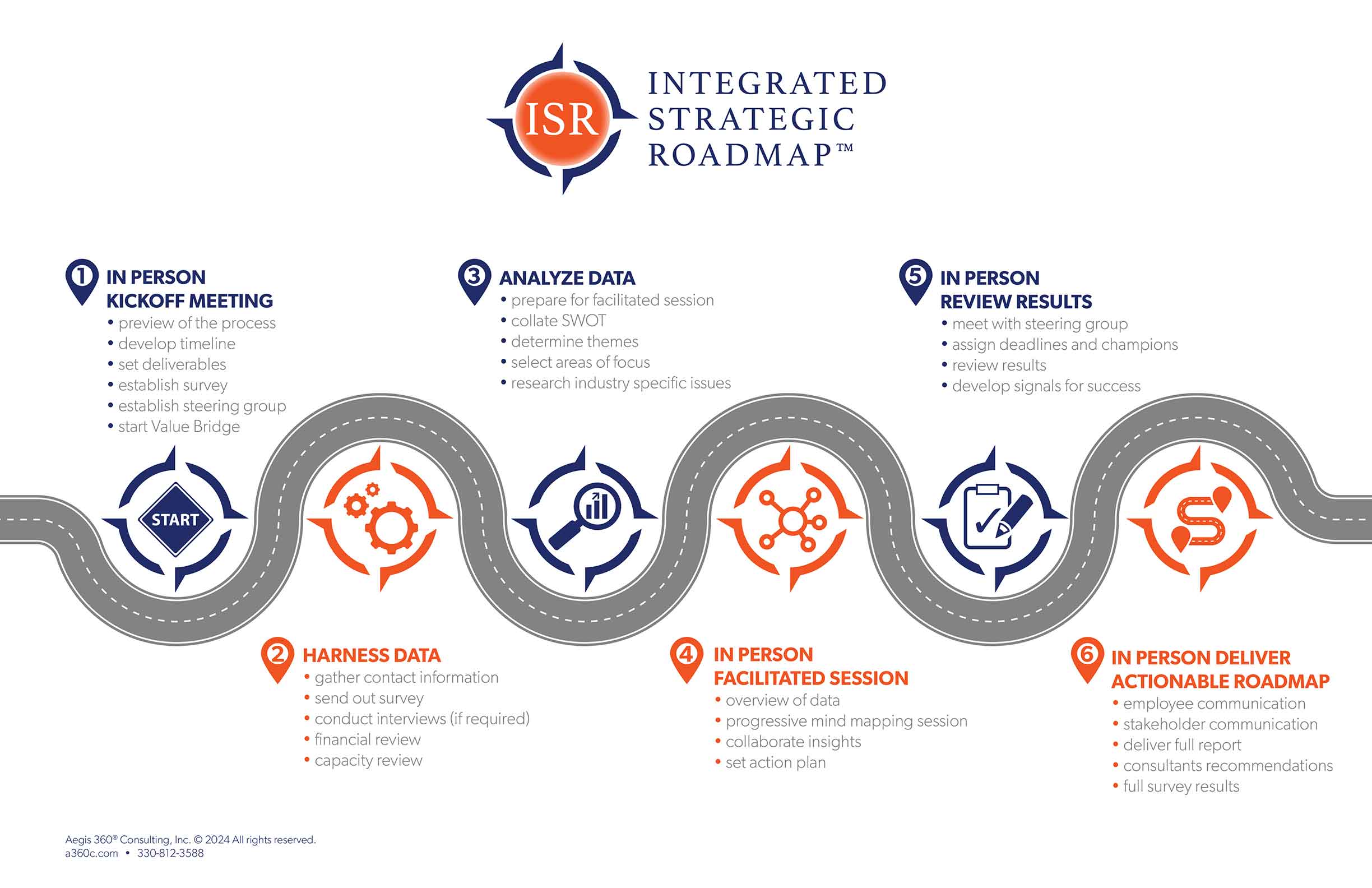
Statistically, a massive 50 percent of all new businesses fail within the first five years of existence.
It isn’t enough to simply have an idea for a great new product or service that resonates with a target audience. Every decision a business leader makes needs to be planned and purpose-driven to be executed flawlessly with the hope of accomplishing some larger goal.
Table of Contents
- Why is Planning Important?
- Your Business Needs a Plan
- What is Strategic Planning? Your Guide
- What Should Your Strategic Plan Look Like?
- Business Planning: An Overview
- What Should Your Business Plan Look Like?
- Strategic Planning vs. Business Planning: Breaking Things Down
- The Aegis 360 Approach
Why is Planning Important?
You could be confident that you’re satisfying a genuine need. You can have access to all the financing required to execute your vision. So many variables could be accounted for, and you might still wind up on the wrong end of those failure statistics due to the lack of a well-laid plan.
Experts agree that many businesses fail not because they aren’t growing but because they’re growing too quickly. They’re scaling for the sake of it and don’t understand the new markets they’ll be reaching. Sometimes, growing too quickly is just as bad as not growing at all. This is why you need a plan to fuel your efforts, no matter what.
Your Business Needs A Plan The question is, “Which Plan?” Strategic or Business?
You’ll often hear two terms used interchangeably in business: strategic planning and business planning.
Admittedly, they are similar concepts—to the point that they even cover much of the same ground. But they are ultimately two different things and should be treated as such. Both are essential to giving the best chance at success to you, your people, and everything you’ve worked so hard to build.
What is Strategic Planning? Your Guide
In general, strategic planning means creating a business strategy with an action plan that can be followed and completed.
“Plans are nothing; planning is everything.” General Dwight D. Eisenhower
Think about the business you hope to be running in 10 years. Now, think about where you are today. The data-driven, calculated path you take to connect these two points is the product of careful strategic planning.
This process involves a few essential elements, like defining what those goals are in the first place. You wouldn’t get in a car for a cross-country road trip without knowing where you’d like to end up. This is the same basic concept, albeit in a different context.
During this phase, you’ll also perform a SWOT analysis. It involves more detail about your company’s strengths, weaknesses, opportunities, and threats. Organizations in many industries use SWOT analysis to help leaders better understand their internal and external states and current and future potential.
What Should Your Strategic Plan Look Like?
If the goal of a strategic plan is to help your organization expand, it stands to reason that you need to know as much about where you currently stand as possible. To find this out, data collection is the critical first step in strategic planning.
We are astounded at how many of these processes start with the mission statement, vision statement, and budget. These items come way later in the process, and in fact, the budget is the last step.
Business Planning: An Overview
A business plan is normally done with a very high-level look at the following items:
- What do you sell? – Highlight your unique value proposition, detailing the solutions or benefits your products or services offer. Emphasize how they meet specific needs or solve problems for your target market.
- How will you sell it? – Outline your sales strategy, including digital marketing, direct sales, distribution channels, and partnerships. Mention the role of technology in reaching your customers and the importance of customer relationship management.
- How big is the market? – Provide an analysis of market size, potential growth, and trends. Use data to support your claims about market opportunities and how your business is positioned to take advantage of them.
- Company formation and structure – Describe the legal structure of your business, whether it’s an LLC, corporation, partnership, or sole proprietorship. Discuss how this structure supports your business objectives and financial goals.
- Funding and legal makeup – Detail your funding strategy, including startup capital, investors, loans, and grants. Highlight the importance of a solid financial plan and compliance with legal requirements for your business’s success.
What Should Your Business Plan Look Like?
Your business plan should weave a compelling narrative that encapsulates the essence of your business, its vision, and how it plans to succeed. The narrative should be supported by detailed financial statements and projections to provide a clear picture of your business’s current financial health and future outlook. Additionally, a robust marketing strategy should outline your approach to reaching your target market, including digital marketing tactics, branding, and customer engagement strategies.
While traditional business plans do not include an action plan, it’s essential to bridge these elements with a strategic framework that guides the implementation of your financial and marketing strategies, ensuring alignment with your business goals.
Strategic Planning vs. Business Planning: Breaking Things Down
Within the realm of organizational development, distinguishing between business and strategic planning is vital. Business plans lay the groundwork, focusing on the immediate structure, finances, and market strategies essential for operational success. In contrast, strategic planning ventures deeper, evaluating an organization’s position and charting a course toward long-term objectives with a clear, executable action plan. This distinction underlines the complementary nature of both approaches in guiding a business from its foundational elements toward achieving its grand vision.
Business Planning:
- Focuses on operational and financial frameworks.
- Includes detailed product/service descriptions, market analysis, and organizational structure.
- Emphasizes financial projections and resource allocation.
- Lacks a detailed action plan for achieving strategic goals.
Strategic Planning:
- Provides a comprehensive review of the organization’s current state and future aspirations.
- Identifies long-term objectives and the strategies to achieve them.
- Involves a deep dive into internal and external factors affecting the organization.
- Concludes with a clear, actionable plan to navigate from the present to the desired future state.

The Aegis 360 Approach
At Aegis 360, we understand that today’s strategic planning is the key to tomorrow’s organizational growth. That’s why we pride ourselves on our ability to help you harness data, mind mapping, and other collaborative insights to create the effective (and, most importantly, actionable) strategic plan you need for your unique business.
Our Integrated Strategic Roadmap is a process built with you in mind that helps accomplish several distinct goals. For starters, yes—it is designed to put you on a path toward accomplishing your objectives and keep you there. But daily, it also helps you achieve the organizational unity and alignment you’ve been lacking.
It creates an environment where collaboration and engagement can thrive at all levels. It also helps set the stage for the type of sustainable growth that so many other organizations fail to achieve, which in and of itself might be the most valuable benefit of all.
Your business model is necessary. The people you surround yourself with are essential. Understanding the marketplace and an innovative product or service are vital ingredients for a successful organization. But without the right thoughtful, data-driven plan to guarantee that you’re always moving in the right direction, you won’t be able to come anywhere near the results you initially sought.
If you’d like to find out more about the major differences between strategic planning and business planning, or if you have additional questions about strategic management or related concepts that you’d like to discuss with someone in a bit more detail, please don’t delay—contact the team at Aegis 360 today to schedule your consultation.


